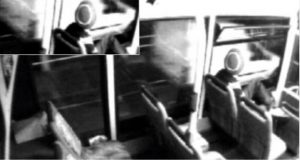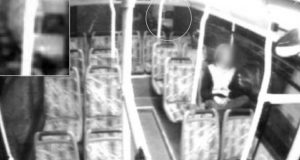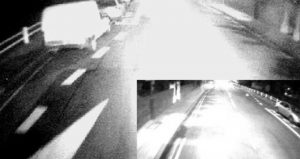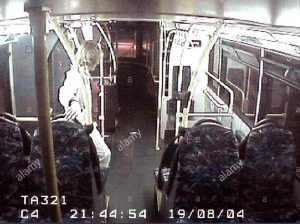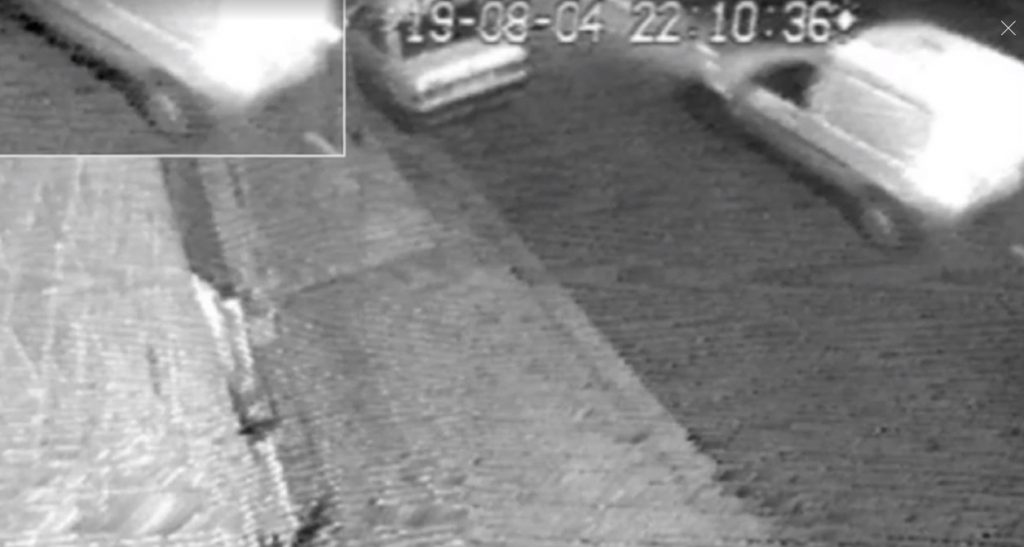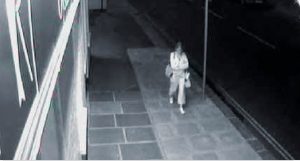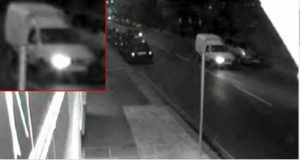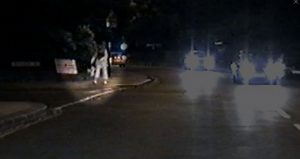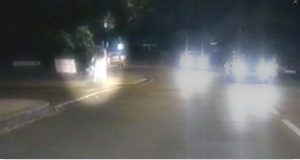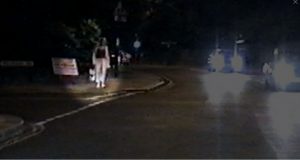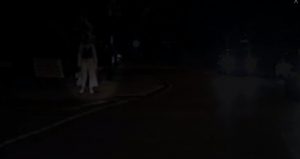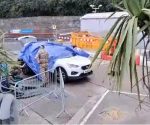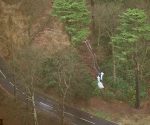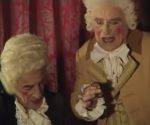State Crime And Police Cover Up; A Reappraisal Of Infamous Cases: Twickenham Attacks; Part Two: getting Delagrange to the killing zone
On August 19th, 2004, 22-year-old Amelie Delagrange was attacked as she crossed Twickenham Green. The strange thing about the case is the very little, incongruous, and conflicting information that was put into the public domain about Delagrange’s business as she went about it at 10pm that fateful night. She had been meeting with friends or acquaintances in Twickenham, and she had caught a bus, but it was the wrong bus, or she missed her stop (if her stop was Twickenham Green), and then didn’t get off the bus until three stops later. When she walked back down the bus route, it took about 15 minutes, and she was caught on CCTV twice, and also on the dash-cam of a police car, or so we are told by Channel 5’s programme, 5 Mistakes that Caught a Killer. When she got to the Green, she hopped over the short railings that surround it, and she started to cross. She had got as far as the cricket pitch, which logic suggests would sit in the middle of the width she was crossing, when she was hit on the head with a blunt object. All this being known, what is not evident at all is where Delagrange was going. “Home” is asserted in a few corporate-media pieces, but this is not necessarily true, and in any case, the exact location of where “home” might be cannot be found by the author in the corporate-media accounts of the time. If the business of Amelie Delagrange was a bit more clear cut, we could get a better feeling about the crime; we could appreciate if it would have been unusual for her to be walking across the Green, for instance.
Now, cabbage-headed television watchers may feel they know the case because of a drama, titled Manhunt, produced by ITV in 2018, which in terms of UK Government propaganda output should be considered an attempt to pad out a weak case against Levi Bellfield, the man who was convicted of the murder of Delagrange, with detail that may or may not have represented the real police investigation. The account of how Bellfield was caught is a muddle of a narrative, and when one digs into it, one gets the distinct feeling that the TV drama has been produced so that it forms a reference point for discussing the case thereafter, and thus forcing the use of a scheme of data where what might be fiction has become fact. As far as the author can see, across three general sources of information regarding the police investigation that led to the conviction of Bellfield – which are (i) the contemporaneous corporate-media reporting; (ii) the retrospective account by Detective Chief Inspector Colin Sutton, police man in charge of the investigation, which forms a lot of the material in the said Channel 5 programme, 5 Mistakes that Caught a Killer; and finally (iii) the film drama (or the plot provided by Wikipedia [if one can’t stand looking at the dross that is modern British television]) – there is one consistency across the whole, which is that police became aware that they were looking for Bellfield because an old girlfriend informed upon him. And this is most definitely a cover story, because from other information we must conclude that Bellfield had permanently been on the Metropolitan Police’s radar for a long time prior to the attack on Delagrange.
But according to the legend, the tip-off by the disgruntled previous ex was not the start of the trail.
The Metropolitan Police decided that Delagrange had had a mobile phone, and that this was missing – had been stolen – along with a handbag, a purse, a set of keys, and a CD walkman. Before it was turned off, says none other than Sutton in one version of his story, the phone had transmitted to the Walton on Thames cell tower at 20 minutes, at the most, after the attack was supposed to have happened; as such it was decided that the attacker had taken Delagrange’s phone – along with her other stuff – and fled to Walton on Thames in a vehicle.
It was also decided to search in the river under a nearby crossing point over the Thames – Walton Bridge – because It had been felt that this would be where the killer would have dumped what he’d stolen (we’ll overlook the small chances of a supposed serial killer risking incriminating himself this way). Lo and behold, a number of Delagrange’s possessions were later fished out by divers.
Before examining the nature of this recovered evidence, however, let the reader consider the case of Lisa Marie Roberts who was released from prison in Oregon in May 2014, after an appeal whereby it was found that the evidence that convicted her was unsound. Roberts’ mobile phone placed her at the scene of a crime because its signal was received by a particular cell tower in that location. However, the expert witness at her appeal testified that “that the nearest tower to a cell phone is per se the one that facilitates the call is not testable, reliable or provable science”. It turns out phone to cell tower connectivity is not straightforward, thanks to factors such as topography, network congestion, weather, and the height of the tower. Roberts’ case is one that the author was able to find with a cursory search, but the reader will no doubt be able to find others.
Making the Metropolitan Police’s phone trail even more doubtful is the fact that Delagrange’s phone had not been found. On the 27th August, 2004, at the time corporate-media reported on the police staging a reconstruction a week after the crime, only the CD player, the keys and the purse had been recovered; the bag and the phone had not. This state of affairs had not changed at the time of Bellfield’s trial in 2007. Reported in The Guardian, this detail appears to be a fact, even if it was later claimed on the Channel 5 programme, 5 Mistakes that Caught a Killer, that the phone had indeed been found. As such, there is no proof that the other objects came to be disposed in the river so quickly after the murder, because the phone has not been physically proven to be in the same location as the Walton cell tower, and it may have been transmitting from further afield when it did so, 20 minutes after the murder.
Given that the police hung its case on Delagrange’s phone, it is a surprise to read that the Manhunt TV drama has a moment where police find a piece of paper on Delagrange’s person which has written on it the phone number of her boyfriend, and this was how they were able to establish contact with him – and this actually happened for real, apparently:
Viewers of the ITV drama Manhunt will see police finding a crumpled piece of a paper with a phone number on it next to Amelie’s battered body.
An officer rings it. And the real-life Olivier will never forget that bombshell call.
“I was asked if I knew someone called Amelie Delagrange,” he says.
“I said ‘yes’ and within an hour they were at my door. They asked if she had a boyfriend and I said ‘yes, that would be me’.
People who are older than 30-years-old will remember that having a piece of paper is what people used to do, before mobile phones were invented, to have a movable record of a useful contact number. People who are a bit younger may remember that even at the turn of the century, mobile phones were not all pervasive as they are now. So, if it is not clear to the reader what is happening here, the author is proposing that, in the light of this revelation, Delagrange might not even have owned a mobile phone.
We learn from reporting of his witness testimony that Delagrange had rung Olivier Lenfant to invite him to spend the night because the owner of the house she lived in was away, but he was too tired from moving boxes into his new flat (and didn’t invite her there, we note), or she was due to go out, or was already out with friends and rang Lenfant at 8.30pm to ask him to join her, and then spend the night with her (as previously mentioned, the narrative is a muddle), which again was refused. There is no specification that Delagrange rang from a mobile phone. Again, older people will remember how the streets in Britain, especially in busy built-up areas, used to be more than adequately furnished with phone boxes.
Having decided that Delagrange’s killer fled the scene in a vehicle, the Metropolitan Police started to scour CCTV footage for a likely culprit, and, behold, they found a van placed at the end of a row of cars all parked in the southern end of bus lane that lines the Twickenham Green on the Hampton Road. Police somehow decided that it was there at the same time as Delagrange was on the Green, and that quickly it was gone soon after the murder. The police asserted that the same van could be detected on CCTV as if fled towards Walton on Thames.
There are a number of problems with this. In the first, consider three images, which are stills from CCTV captured from inside and from an external camera on a bus. The two taken from the inside show the van as the bus is passing it, and then the van as the bus has passed it. We can deduce the stills are from the same bus because of the passenger who features in both. The still taken by the bus mounted camera shows a bus approaching the van.
Obviously, the problem is the lack of time stamps. Now, for clarity please understand that these images were taken from the Channel 5 programme, 5 Mistakes that Caught a Killer, and appear as they were presented: without time stamps. As far as we can tell, the external image could have been taken from another bus than the one that the man with the hat was riding, and therefore these images could reflect that the van was parked in that spot for any duration that we might care to take a guess at. Even if all the images were from the same bus, we don’t know what time they were captured.
If we want to take the Metropolitan Police’s word for it, these images, and some other images without time stamps presented by Channel 5, showed that at 10.05pm, around the time of the murder, the suspect van was in position, but not so just a few minutes before at 10pm, or minutes later at 10.08pm.
At the trial to convict Delagrange’s murderer, the prosecution posited that the killer tracked her after noticing her get off the bus at Fulwell bus garage at 9.45pm, and passed her to park up in time at the Green in order to stage his attack. In fact, the official narrative has Delagrange’s attacker pull over and talk to her; actually, this detail is a matter of belief held by police to explain why Delagrange was slow to travel across what is described as the last section of her journey.
It’s not clear from the information available to us how police could track Delagrange’s progress from one point to the next because the author is only aware of one time-stamped image showing her on her walk.
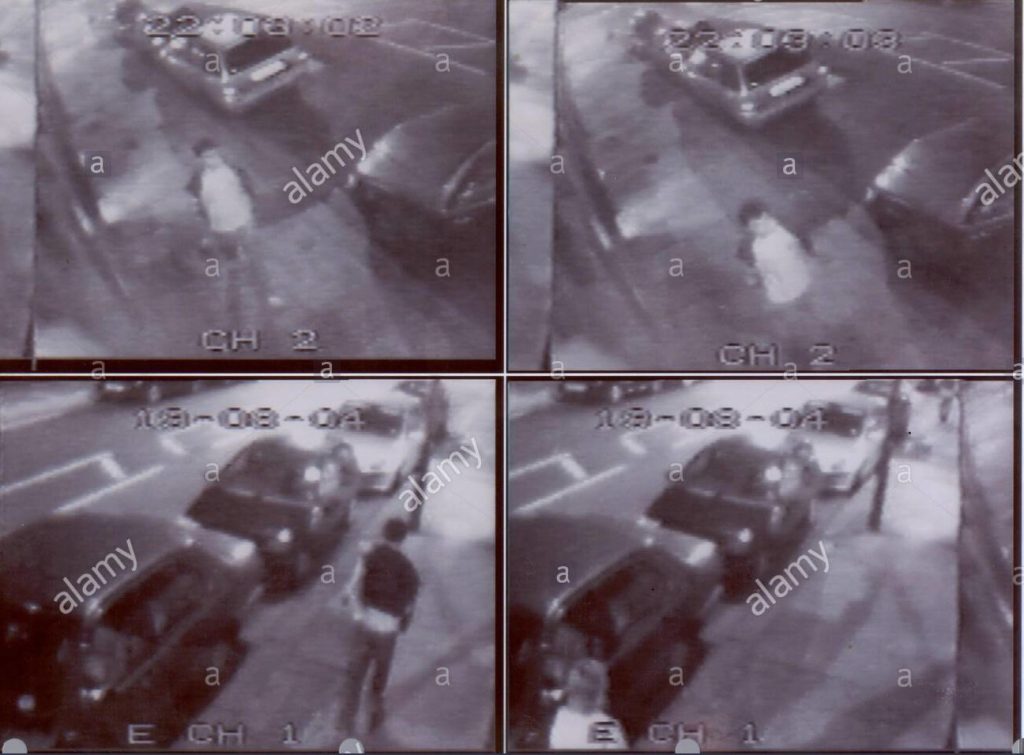
This image (again being used to illustrate a point in a murder case of national importance) shows Delagrange following another late evening stroller.
The time says 10.03pm, and from studying the map, the author thinks that she is two minutes out from the Green. Now, Google Maps says that the 0.7 miles of Delagrange’s journey could be walked in 15 minutes. Of course, there are 20 minutes between 10.05pm, and 9.45pm when she left the bus at Fulwell (time-stamped internal bus footage shows). The slight delay could be due to a slow walk. On the other hand, it might be true that she stopped to speak to someone on her journey, because, arguably, her attacker would need to get a feel for where she was going, or indeed direct her to the target zone, if any plan to hurt her was going to come to fruition.
In support of the story of a targeted and therefore quickly executed murder, is an image from CCTV, with a time stamp of 22.10.36, showing the same sort of van that had been parked at the Green.
The idea we are supposed to have is that here is the van in flight after the murder. Unfortunately, there appears to be little information in the image whereby it can have any context, so ultimately as far we can be concerned, it merely shows that a van of the same type that police think was driven by the murderer was on the road, somewhere, at aforementioned time. By the way, the Metropolitan Police found that there were between 25 and 26 thousand vans of this type – a Ford Courier – in the UK. Just by the proportions involved, a good percentage of these would be driving around in London: that would be a little more than 2.75 thousand, by the author’s rough calculations.
However, if we suppose that this is the same van that was parked at the Green (and from the image the police seem to think that some feature about the left rear wheel is an indicator, despite it being hidden from view at the scene of the crime), now let us consider another image.
It shows the same van (allegedly) coming past a CCTV camera mounted at the Loch Fyne fish and oyster bar. Because there is also an image of Delagrange passing this exact same point, we are invited to understand that this is evidence that the killer tracked her. However, the reader will notice that there are no timestamps in either of the images. The police, however, would be able to give a time for when Delagrange appeared at this spot because they could estimate how long it would take to arrive from Fullwell. Notice that the left headlight on this van is not working, and then have another look at the van supposedly in flight where the left headlight is clearly on.
Incidentally, it’s not clear how the killer carried off the feat of noticing her at Fullwell, and then “following” her to a spot where she would be vulnerable to attack some 0.7 miles away, given that he was in a van and she was walking. Maybe, at the risk of not looking natural, he had to keep stopping so that she could always remain a distance in front of him, or maybe after passing her he’d stop to wait for her to catch up after every one of the junctions on the “last section” (if the police mean after the fish bar, there are eight of them) to make sure she didn’t turn off the road behind him. Bear in mind, to do this effectively is possibly easier said than done when the route has sections lined with parked cars. Again, it’s important to think about how Delagrange had tabs kept on her so that she could be found in a place where an attack could take place, or even so that an intervention could be made at a crucial point so that she would make a decision to put herself in the firing line.
We should note that the police nominated a time of the attack based purely on a short window of time when they say (because we have no confirmation) a particular van was parked at the Green. It hasn’t been mentioned before, but there was no forensic evidence found at the scene; there was nothing, apparently, by which the police allowed themselves to be informed any differently to allow for anything other than their tiny window. However, it stands to reason that Delagrange was not necessarily killed at 10.05pm, or roughly some few minutes after that.
She was found at 10.26pm, still alive, and with a pool of blood surrounding her head. This detail could be for the sensationalism, or it could indicate a certain freshness of attack. So, it could well be that Delagrange was attacked after the police say she was, and therefore after their suspect supposedly leaves the scene. As per the crucial factor introduced right at the top of this piece, we don’t know what Delagrange was doing, and it shouldn’t be assumed that her arrival at the Green was automatically followed by her crossing it.
Moreover, the apparent stealthy nature of the attack means that if it could have happened unnoticed at a few minutes past ten, it might well have happened equally unnoticed at any time in the next 15 to 20 minutes. It is quite clear that there were people in the area who might have witnessed the attack, and did not, because we can see a male in the CCTV ahead of Delagrange as she is approaching the Green – and evidently he had fallen back from a larger party. Furthermore, Twickenham Green is an overlarge village green, not a park. It is lined by shops on one side, and a residential street, First Cross Road, on another (with phone boxes at each end). There is clear line of sight from these places onto the Green, so Delagrange was done in under a lot of noses. Indeed, why could she not even have been killed right under the nose of the person who found her at 10.26pm? This character, by the way, doesn’t have a name (but given that the time of discovery is so precise, he must have looked at his watch, military fashion, when he found Delagrange)†.
And on the subject of being noticed, or not, why was Delagrange on the Green anyway? If she wanted to cut across, she could have walked down the residential First Cross Road, where at 10pm most people would not have gone to bed yet, and even a bang on a head, a possible squeal, and a thud as a body hit the floor might have alerted them if it had happened directly outside their windows. Her boyfriend, Olivier Lenfant, told the trial that she was careful that way “recalling a time when they had walked home past a dark viaduct [, Lenfant told how]… she had commented that she would never go there at night by herself.”
Continuing in the same subject of Delagrange’s visibility for keeping her safe, the Channel 5 programme, 5 Mistakes that Caught a Killer, showed a clip which it said was from a passing police car dash-cam in the context of her journey being officially documented in a coincidental way. However, when one examines this clip carefully, one can see that the police car is not passing Delagrange. She comes to a halt at the kerb, and her attention is clearly concentrated on the car. She looks like she is waiting for it. Moreover, before she does this, there is a moment when the view from the camera is filled with light, as if perhaps the driver had flashed his headlights. The footage is then faded to black, with reason quite likely being that if we had been allowed to see it continue we would understand that Delagrange interacted with the police on the night she was murdered, and even perhaps see that the car turned into the road at which she came to a halt.
The author has not been able to match the location shown in the police dash-cam with any point on Delagrange’s official journey, taking into consideration the School crossing sign, its style in particular, and the fact of the sweeping bend in the road to the left. That the road name sign is indecipherable doesn’t help – we might well ask, what is the point of dash-cams for verifying police activity if they can’t pick up letters on a street sign. Or perhaps the unreadable lettering is just a feature of post-production when police are covering up State crime – in fact, this evidence, if it can ever be resolved, may show police being active at the front end of the criminality (hence the title of this piece). And just to reassure the reader that we can be confident in classifying the Delagrange murder as the work of the UK Government’s Krypteia (see here), it turns out, according to a corporate-media report, that Bellfield was a Metropolitan Police informant – which will be subject matter for the next article.
† While one version of the tale has it that a student discovered Delagrange on the Green, one BBC article from 2008 reports the following:
[As Delagrange] took a short-cut across the green she was hit over the head with a blunt object.
She was found lying in a pool of blood by a police officer.
In the light of what has been examined in this piece, this should perhaps not come as a surprise.




